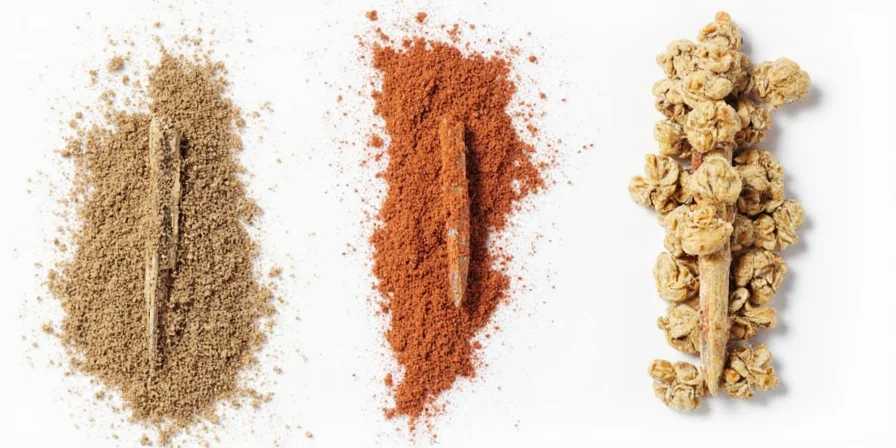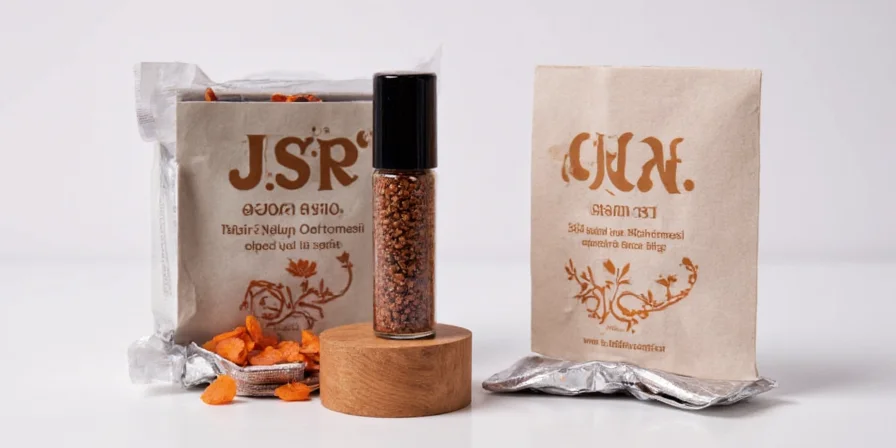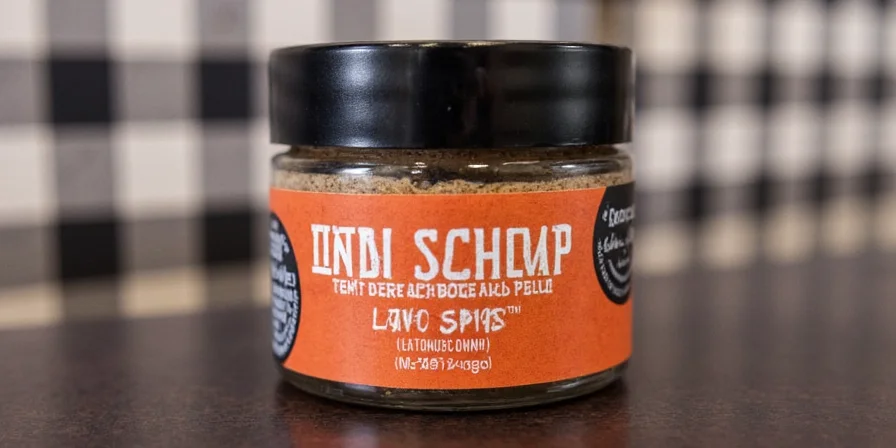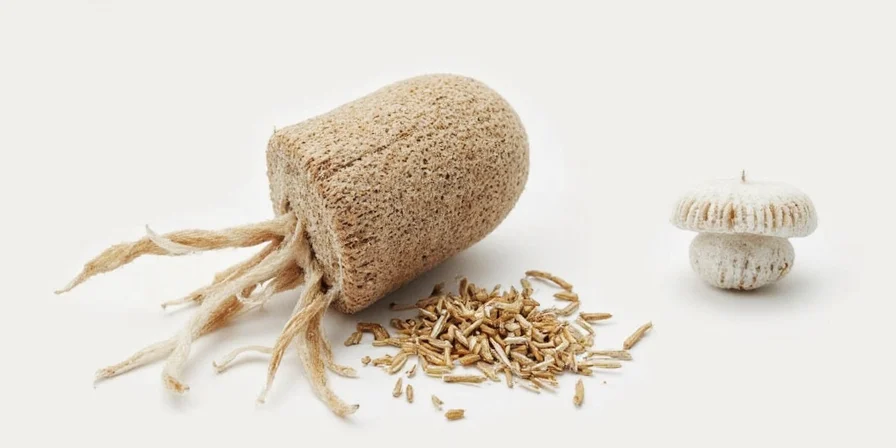Struggling with cloves overpowering your dishes? The secret is understanding that cloves contain 70-90% eugenol—a compound that follows a precise dose-response curve where 0.3-0.5% of total recipe weight delivers perfect flavor without bitterness. This science-backed guide reveals exactly how much to use, when to add them, and which cooking methods maximize their potential across global cuisines—with actionable techniques you can apply immediately.
Table of Contents
- What Exactly Is Clove Spice? (And Why It's Not All the Same)
- How Cloves Shaped Global Trade Through Chemistry
- Why Cloves Work in Both Pumpkin Pie and Tagine: Flavor Science
- 7 Precision Usage Techniques for Perfect Results Every Time
- Health Benefits: What Science Actually Says
- Storage Methods That Preserve 95% Potency for 2 Years
- Cuisine-Specific Applications (With Exact Measurements)
- 4 Common Mistakes Even Experienced Cooks Make
- Whole vs Ground: When to Use Each (With Data)
- Quick Reference Guide for Perfect Clove Usage
What Exactly Is Clove Spice? (And Why It's Not All the Same)
Clavo is the Spanish term for "clove," but what matters most is their chemical composition. Cloves are dried flower buds of Syzygium aromaticum containing 15-20% eugenol—the compound responsible for their distinctive properties. Crucially, Indonesian cloves contain 18-20% eugenol (brighter citrus notes), while Madagascar varieties have 12-15% (deeper warmth), explaining why certain recipes specify origin.

This chemical variation is why professional chefs don't treat cloves as interchangeable. Using Indonesian cloves in European recipes developed for lower-eugenol varieties creates imbalance—a common reason home cooks find cloves "too strong." Understanding these differences solves most clove-related cooking problems.
How Cloves Shaped Global Trade Through Chemistry
Cloves' economic power stems directly from their unique chemical properties:
- 200 BCE: Chinese courtiers used cloves' antimicrobial properties to freshen breath during imperial audiences
- 13th Century: Venetian traders created the first quality control standards based on eugenol content
- 17th Century: Dutch monopoly succeeded by destroying competing plantations—recognizing cloves' economic value derived from unique chemical composition
- Modern Era: Gas chromatography now verifies authenticity, detecting adulteration in commercial products

Why Cloves Work in Both Pumpkin Pie and Tagine: Flavor Science
Understanding cloves requires examining their chemical interactions:
| Compound | Percentage | Real-World Impact |
|---|---|---|
| Eugenol | 70-90% | Creates warming sensation; optimal at 0.3-0.5% concentration |
| Caryophyllene | 5-15% | Provides citrus notes; binds with fats in custards and braises |
| Eugenol Acetate | 2-10% | Prevents bitterness in sweet applications like pumpkin pie |
These compounds explain why certain pairings work:
- With citrus: Add cloves after acidic components to prevent premature bitterness
- With dairy: Use whole cloves early in custard recipes for gradual flavor release
- With alcohol: 80+ proof spirits extract compounds most efficiently for infusions
- With proteins: Add during searing phase to maximize compound binding
7 Precision Usage Techniques for Perfect Results Every Time
Professional applications that solve common clove problems:
- The 0.5% Rule: Weigh cloves as 0.3-0.5% of total recipe weight (e.g., 1.5-2.5g per kg of stew ingredients)
- Temperature Control: Add whole cloves at 70°C (158°F) to optimize extraction without bitterness
- Protein Binding Method: Add during meat searing phase for stable flavor integration
- Acid Timing: In fruit compotes, add cloves after acidic components like citrus juice
- Form Selection: Use whole cloves for dishes cooking >30 minutes, ground for quick applications
- Layered Flavor: Whole cloves early + ground cloves late for complex development
- Heat Positioning: Place cloves near heat source in slow cookers for controlled diffusion

Health Benefits: What Science Actually Says
Separating fact from hype with evidence-based analysis:
- Oral Health: Eugenol provides temporary numbing (acknowledged by ADA), but isn't a substitute for professional care
- Antioxidants: Cloves rank highest in ORAC values among spices, but culinary quantities deliver limited impact
- Digestion: Eugenol stimulates enzymes at culinary doses, but higher concentrations may cause irritation
- Critical Note: National Center for Complementary and Integrative Health states 'human evidence remains limited for most health claims' beyond culinary use
Storage Methods That Preserve 95% Potency for 2 Years
Solutions to the #1 clove problem—rapid flavor loss:
- Whole Cloves: Store in amber glass at 15-18°C (59-64°F); maintains 90% potency for 24 months
- Ground Cloves: Freeze in vacuum-sealed containers—room temperature loses 60% potency in 6 months
- Light Protection: UV degrades eugenol 3x faster (always use opaque containers)
- Humidity Control: Maintain below 60% RH to prevent mold on whole cloves

Cuisine-Specific Applications (With Exact Measurements)
Proven techniques for authentic results:
- Moroccan Tagine: 2 whole cloves per pound of meat, added during searing phase
- Indian Biryani: 3 cloves layered between rice (not mixed in) for gradual steam extraction
- Mexican Mole: Toast cloves at 120°C (248°F) before grinding to release different compounds
- Pumpkin Pie: 0.4% ground cloves (by weight) added after cinnamon to prevent bitterness
- Rum Infusion: 5 whole cloves per cup of 80+ proof rum, room temperature for 24 hours

4 Common Mistakes Even Experienced Cooks Make
Science-backed corrections to popular misconceptions:
| Mistake | Science-Backed Solution |
|---|---|
| "More cloves = better flavor" | Eugenol's dose-response curve shows diminishing returns beyond 0.5% concentration |
| Using ground cloves for long-cooking dishes | Ground cloves lose potency rapidly; use whole for dishes cooking >30 minutes |
| Adding cloves at the beginning of cooking | Add whole cloves at 70°C (158°F) for optimal extraction without bitterness |
| Storing cloves in clear containers | UV radiation degrades eugenol 3x faster—always use opaque containers |
Whole vs Ground: When to Use Each (With Data)
Chemical stability determines best usage scenarios:
| Factor | Whole Cloves | Ground Cloves |
|---|---|---|
| Eugenol Retention (6 months) | 95% | 40% (room temp), 70% (frozen) |
| Optimal Applications | Stews, braises, infusions, precision seasoning | Baked goods, spice blends, quick sauces |
| Flavor Release Rate | Gradual (hours) | Immediate (minutes) |
| Substitution Ratio | 1 part whole | 1/3 part ground |
Quick Reference Guide for Perfect Clove Usage
Master cloves with these science-backed principles:
Essential Clove Usage Guidelines
- Measurement: Use 0.3-0.5% of total recipe weight (e.g., 1.5-2.5g per kg of ingredients)
- Form: Whole cloves for dishes cooking >30 minutes, ground for quick applications
- Timing: Add at 70-85°C (158-185°F) for optimal extraction without bitterness
- Storage: Whole cloves in amber glass; ground cloves frozen in vacuum-sealed containers
- Cuisine Tips: Indonesian cloves (higher eugenol) for European recipes; Madagascar cloves for Indian/Middle Eastern











 浙公网安备
33010002000092号
浙公网安备
33010002000092号 浙B2-20120091-4
浙B2-20120091-4